GENERAL DATA
Plant parts: Whole Herb
Cultivation mode: Wild collection/ Cultivated
In manufacturing: Pharmaceutical, dairy, alcoholic drink, mouthwash, tooth paste, soap, detergents, oil, beverage, spice, shampoo, skin care, hair care, cosmetic, extract.
In food: Soup, salad, meat, sausage, tea.
🍃 Industries That Use Thyme Leaves (Thymus vulgaris)
Here’s a well-organized list of industries that commonly use Common Thyme leaf:
🌿 What Are Thyme Leaves?
Thyme leaves are the aromatic, evergreen foliage of Thymus vulgaris, a Mediterranean herb rich in thymol, carvacrol, and other potent phenolic compounds.
Used globally in culinary, pharmaceutical, cosmetic, and cleaning industries for their antiseptic, antimicrobial, antioxidant, and flavoring properties.
1. Pharmaceutical & Herbal Medicine Industry
Key applications:
-
Antimicrobial: Treats throat infections, cough, bronchitis
-
Digestive aid: Reduces gas, bloating, and indigestion
-
Immune stimulant: Used in herbal cold and flu remedies
-
Anti-inflammatory: Relief for rheumatic and respiratory conditions
✅ Found in syrups, capsules, throat sprays, tinctures, and herbal decoctions
2. Food & Culinary Industry
One of the most widely used culinary herbs in the world.
Uses:
-
As a dried or fresh herb in meat, poultry, soup, and vegetable dishes
-
Part of seasoning blends (e.g. Herbes de Provence, Za’atar)
-
Preservative and flavor enhancer in processed meats and sauces
✅ Known for its warm, earthy, slightly minty flavor
3. Nutraceutical & Functional Food Industry
Applications:
-
Herbal teas for digestion and immune support
-
Included in detox powders, lozenges, and antioxidant drinks
-
Used in wellness tonics and cleansing formulas
✅ Often blended with oregano, rosemary, and sage
4. Cosmetic & Personal Care Industry
Thyme leaves are valued for their astringent and antimicrobial properties.
Used in:
-
Acne toners and facial cleansers
-
Scalp treatments and anti-dandruff shampoos
-
Toothpastes and mouthwashes
✅ Key ingredient in natural and botanical personal care
5. Household & Cleaning Products
Due to high thymol content, thyme is used as a natural disinfectant.
Applications include:
-
Herbal surface sprays and antibacterial wipes
-
Mold-prevention and air-purifying blends
-
Added to natural soaps and hand sanitizers
6. Veterinary & Animal Health
Used in natural poultry feed additives and livestock tonics to support digestion and reduce infections.
✅ Summary Table – Thyme Leaves 🍃
| Industry | Common Uses |
|---|---|
| Pharmaceutical & Herbal | Cough relief, digestive support, anti-inflammatory remedies |
| Food & Culinary | Seasoning, flavor enhancer, food preservation |
| Nutraceutical | Immune teas, wellness blends, detox products |
| Cosmetic & Skincare | Acne toner, oral care, scalp health products |
| Household & Cleaning | Antibacterial sprays, soaps, disinfectants |
| Veterinary | Livestock feed additives, poultry digestion support |
🌸 Industries That Use Thyme Flowers (Thymus vulgaris)
Here’s a well-organized list of industries that commonly use Common Thyme flower:
🌿 What Are Thyme Flowers?
The tiny, pink to lavender flowers of Thymus vulgaris are not only attractive but also rich in essential oils, particularly thymol and linalool. Though less concentrated than the leaves, the flowers offer milder fragrance and aesthetic appeal.
Used in teas, skincare, aromatherapy, and apiculture (beekeeping).
1. Herbal & Nutraceutical Industry
Thyme flowers are gentler than the leaves and are used in mild infusions and wellness blends.
Applications:
-
Relaxing herbal teas with mild expectorant effects
-
Blended with chamomile, mint, or elderflower for flavor and function
-
Used in antioxidant-rich herbal capsules
✅ Preferred for floral blends with a lighter aroma
2. Tea & Beverage Industry
Used in:
-
Decorative and aromatic herbal teas
-
Caffeine-free floral blends for calm, digestion, or colds
-
Added visual appeal in transparent tea bags and loose-leaf blends
3. Cosmetic & Skincare Industry
Due to soothing, floral, and antimicrobial properties, thyme flowers are used in:
Products include:
-
Facial steam blends and hydrosols
-
Soothing tonics and flower waters
-
Bath soaks and calming herbal masks
✅ Often combined with rose, lavender, and calendula
4. Perfume & Aromatherapy Industry
The essential oil from thyme flowers (if distilled separately) has a lighter floral profile than leaf oil.
Uses:
-
Floral incense and sachets
-
Uplifting and purifying essential oil blends
5. Apiculture (Beekeeping)
Thyme flowers are highly attractive to bees and support honey production.
Applications:
-
Planted in bee gardens
-
Produces thyme honey with antimicrobial qualities
✅ Summary Table – Thyme Flowers 🌸
| Industry | Common Uses |
|---|---|
| Herbal & Nutraceutical | Mild teas, antioxidant blends, expectorant formulas |
| Tea & Beverage | Decorative floral infusions and calming herbal teas |
| Cosmetic & Skincare | Soothing waters, facial steams, bath soaks |
| Aromatherapy & Perfume | Uplifting incense, floral EO blends |
| Beekeeping (Apiculture) | Bee-attracting plant for honey production |
🌱 Industries That Use Thyme Seeds (Thymus vulgaris)
Here’s a well-organized list of industries that commonly use Common Thyme seed:
🌿 What Are Thyme Seeds?
Thyme seeds are the tiny, brown seeds of Thymus vulgaris, used both for propagation and in certain specialized health, oil extraction, and traditional uses.
While the leaves and flowers are more commonly used, the seeds contain volatile oils and are valued in phytotherapy, oil production, and agricultural sectors.
1. Pharmaceutical & Herbal Medicine Industry
Though less common than leaves, thyme seeds are used in herbal practices and traditional remedies:
Applications:
-
Digestive stimulant: Used in seed-based decoctions for bloating, gas, and sluggish digestion
-
Carminative: Supports intestinal comfort
-
Expectorant: Used in respiratory mixtures in traditional systems
-
Oil-rich: Source of thymol and other essential oil constituents in seed form
✅ Occasionally ground and mixed with honey or warm water in Persian & Unani traditions
2. Essential Oil & Extraction Industry
Thyme seeds may be processed for essential oil extraction, especially in industrial or seed-oil niche settings.
Oil components:
-
Thymol
-
Carvacrol
-
Linalool
-
Borneol
✅ Seed-oil extract is used for antimicrobial and insecticidal formulations
3. Agriculture & Horticulture Industry
The primary industrial use of thyme seeds is in propagation:
Applications:
-
Cultivation of medicinal thyme crops
-
Used by herbal farms and organic growers
-
Selected for high-thymol content strains
✅ Specialty seed suppliers serve herb producers and ecological gardens
4. Veterinary & Poultry Industry
In some cases, ground thyme seeds are used in herbal feed additives for small animals or poultry.
Benefits:
-
Antimicrobial gut support
-
Improves digestion and reduces infections
✅ Occasionally mixed with garlic or fenugreek seed blends
5. Scientific & Botanical Research
Used in academic and laboratory settings for:
-
Phytochemical analysis (volatile profiles, germination patterns)
-
Medicinal crop breeding studies
✅ Studied for climate resilience and oil yield optimization
✅ Summary Table – Thyme Seeds 🌱
| Industry | Common Uses |
|---|---|
| Pharmaceutical & Herbal | Seed decoctions for digestion and respiratory aid |
| Essential Oil Extraction | Oil source (thymol, carvacrol) for natural health products |
| Agriculture & Horticulture | Cultivation of thyme for commercial and medicinal use |
| Veterinary & Poultry | Feed additive for gut support and antimicrobial protection |
| Academic Research | Studies on seed oil content, germination, climate adaptation |
🌱🍃🌸 Key Feature Legend:
-
🌱 = Seeds → Pharmacological potency (silymarin, oils)
-
🍃 = Leaves → Antimicrobial, aromatic, widely used
-
🌸 = Flowers → Mild, floral, cosmetic and tea appeal
🍃 Industries That Use Wild Thyme (Thymus serpyllum L.)
Here’s a complete industry-focused breakdown for Wild Thyme (Thymus serpyllum L.)—a powerful aromatic herb most commonly traded as dried leaves (sometimes flowering tops). Since it’s typically not sold in separate parts like seeds or flowers, this unified overview will cover all known industry applications for its aerial parts.
🌿 What Is Wild Thyme?
Wild Thyme (also called Creeping Thyme or Serpolet) is a low-growing perennial herb native to Europe, Iran, and Central Asia. It is closely related to Thymus vulgaris but contains slightly different essential oil profiles—often higher in carvacrol, borneol, and thymol.
Wild Thyme is known for its intense aroma, antimicrobial potency, and expectorant effects, making it valuable in pharma, herbal, cosmetic, and wellness sectors.
1. Pharmaceutical & Herbal Medicine Industry
Wild Thyme has deep roots in traditional medicine, especially in Europe, Iran, and Russia.
Main Applications:
-
Expectorant: Used in cough syrups, lozenges, and decoctions
-
Bronchial support: Treats asthma, whooping cough, and bronchitis
-
Digestive tonic: Reduces gas, cramps, and sluggish digestion
-
Antiseptic wash: Used for skin infections, wounds, and mouth ulcers
-
Antioxidant & Immunity Booster: High phenolic content supports immune blends
✅ Found in syrups, teas, tinctures, topical balms, and gargles
2. Nutraceutical & Functional Foods
Used in wellness teas, detox formulations, and immune supplements.
Form Factors:
-
Herbal detox blends
-
Cough and respiratory herbal teas
-
Immune-boosting capsules
-
Antioxidant tonics
Often combined with sage, oregano, or elderflower in multifunctional blends.
3. Cosmetic & Skincare Industry
Thanks to its astringent and antimicrobial properties, wild thyme is added to:
-
Acne and oily skin formulas
-
Facial steams and botanical toners
-
Foot baths and deodorizing creams
-
Anti-dandruff shampoos and scalp tonics
✅ Especially used in natural and anti-acne skincare products
4. Aromatherapy & Essential Oil Industry
The essential oil of Thymus serpyllum is known for its high carvacrol content, making it a powerful component in:
-
Natural disinfectant oils
-
Energizing and purifying diffuser blends
-
Herbal massage oils for respiratory and muscular relief
-
Warming foot and chest balms
✅ Popular in therapeutic aromatherapy and cold-season blends
5. Food & Beverage Industry
Though less common than common thyme, wild thyme is used in:
-
Herbal liqueurs and traditional bitters
-
Seasoning blends for meats and stews (especially in Eastern European cuisine)
-
Herbal teas with a strong, earthy, slightly peppery flavor
✅ Known for its bold taste and digestive support
6. Veterinary & Poultry Health
Used in natural animal health practices, especially in rural areas:
-
Herbal decoctions for animal coughs and colds
-
Added to feed as an antimicrobial agent
-
Natural deworming and digestive tonic for livestock
✅ Still practiced in folk and low-impact farming systems
7. Academic & Medical Research
Ongoing studies explore:
-
Antimicrobial and antifungal effects
-
Respiratory therapeutic effects
-
Antioxidant and anti-inflammatory potential
-
Chemotype variations in wild vs. cultivated forms
✅ Summary Table – Wild Thyme (Thymus serpyllum L.)
| Industry | Common Uses |
|---|---|
| Pharmaceutical & Herbal | Cough relief, bronchitis, antiseptic gargles, digestion |
| Nutraceutical | Immune teas, detox formulas, antioxidant capsules |
| Cosmetic & Skincare | Acne care, scalp health, botanical toners |
| Essential Oil & Aromatherapy | Carvacrol-rich EO for respiratory, antimicrobial, and energizing use |
| Food & Beverage | Herbal teas, culinary bitters, seasoning mixes |
| Veterinary Medicine | Natural feed additive, respiratory and gut support for livestock |
| Academic Research | Studied for antimicrobial and anti-inflammatory properties |
🌿 Key Features of Wild Thyme:
-
Rich in carvacrol, thymol, and flavonoids
-
Strong antimicrobial and expectorant properties
-
Widely used in respiratory, digestive, and dermatological applications
-
Wild-harvested or cultivated in temperate regions
PRODUCT NAME IN DIFFERENT LANGUAGES
Persian Name: آویشن/ Avishan
German Name (Deutschland, Austria, Switzerland): Feld-Thymian, Sand-Thymian, Quendel, Wilder Thymian, Echter Thymian, Garten Thymian
French Name (France, Belgium, Switzerland, Quebec): Serpolet, Thym Serpolet, thym des jardins, farigoule, mignotise des Genevois
HARVEST CALENDAR
Feb
Mar
Apr
May
Jun
Jul
Aug
Sep
Oct
Nov
Dec
To order Thyme dried leaves, please contact us.
3. Brew 15 to 25 grams of dried Thyme in one liter of boiling water and drink 5 to 6 cups of it gradually every day. Pulmonary infections, recurrent coughs, pertussis, asthma or shortness of breath, colds, bronchitis, catarrh, angina, headaches caused by nervousness or indigestion, and treatment of severe half-head headache or migraine, relieves stuttering, relieves indigestion and heaviness of stomach, stomach ache and inflammation of intestines, carminative, treats skin diseases, nerve pain, nervous convulsions or fasciculation, liver disorders, diarrhea and purulent discharge of urine and menstruation.
It is useful for treating hiccups, urine intermittency, crushing bladder stones and relieving uterine pain, it is astringent and tonic, it strengthens the heart, it is refreshing, it increases intelligence and perception, it increases urine, menstruation secretions, sweat and milk, relieves intestinal cramps, is anti-fungal and parasitic and facilitates the removal of the fetus and choroid, and is useful for the treatment of alopecia. It is useful for relieving herpes, relieving anxiety and relieving sciatica pain.
12. Its suppository is effective for scenting the uterus.
Thyme Side Effects
Excessive consumption of it weakens the heart muscle and causes ringing in the ears and dizziness.
Thyme flowers Health Benefits
Brew 20 to 30 grams of it in a liter of boiling water, then strain and drink it. It is invigorating, expectorant, emmenagogue, analgesic, anticonvulsant and mildly sudorific, strengthens the stomach, treats bloating and indigestion, if someone has diarrhea or intestinal disorders, it eliminates its side effects.
🧾 Nutrition Facts – Dried Thyme Leaves (100g)
Botanical Name: Thymus vulgaris L.
Plant Part: Leaves (dried)
Common Uses: Culinary seasoning, herbal teas, medicinal extracts, tinctures, essential oil production.
| Nutrient | Amount per 100g | % Daily Value (DV)* |
|---|---|---|
| Calories | 276 kcal | 14% |
| Water | 7.8 g | — |
| Protein | 9.1 g | 18% |
| Total Fat | 7.4 g | 11% |
| • Saturated Fat | 2.7 g | 14% |
| Carbohydrates | 63.9 g | 21% |
| • Dietary Fiber | 37.0 g | 132% |
| • Sugars | 1.7 g | — |
🔬 Minerals
| Mineral | Amount | %DV |
|---|---|---|
| Calcium | 1890 mg | 145% |
| Iron | 124 mg | 690% |
| Magnesium | 220 mg | 52% |
| Potassium | 814 mg | 17% |
| Phosphorus | 201 mg | 29% |
| Zinc | 6.2 mg | 56% |
| Copper | 0.55 mg | 61% |
| Manganese | 7.9 mg | 343% |
| Sodium | 55 mg | 2% |
🌿 Vitamins
| Vitamin | Amount | %DV |
|---|---|---|
| Vitamin A (RAE) | 190 µg | 21% |
| Vitamin C | 50 mg | 56% |
| Vitamin E (α-tocopherol) | 7.4 mg | 49% |
| Vitamin K | 1714 µg | 1428% |
| Thiamin (B1) | 0.48 mg | 40% |
| Riboflavin (B2) | 0.4 mg | 31% |
| Niacin (B3) | 4.9 mg | 31% |
| Vitamin B6 | 0.55 mg | 42% |
| Folate (B9) | 274 µg | 69% |
🧬 Key Phytochemicals
-
Thymol and Carvacrol (strong antimicrobial agents)
-
Rosmarinic acid (anti-inflammatory, antioxidant)
-
Flavonoids (including luteolin, apigenin)
-
Phenolic acids and terpenes
🧪 Traditional & Industrial Applications
-
Used in:
-
Antiseptic and respiratory herbal blends
-
Digestive tonics, oral hygiene rinses, and soothing teas
-
Food preservation and culinary seasoning
-
-
In traditional medicine for:
-
Bronchial support, cough relief, antispasmodic action
-
Strengthening immunity and reducing oxidative stress
-
🔍 Note: Nutritional content varies by drying method and harvest season. Values based on USDA and European pharmacognosy data.
🧾 Nutrition Facts – Dried Thyme Flowers (100g)
Botanical Name: Thymus vulgaris L.
Plant Part: Flowers (dried)
Common Uses: Herbal tea infusions, aromatic blends, essential oil distillation, traditional remedies.
| Nutrient | Amount per 100g | % Daily Value (DV)* |
|---|---|---|
| Calories | 265 kcal | 13% |
| Water | 8.2 g | — |
| Protein | 8.6 g | 17% |
| Total Fat | 6.9 g | 11% |
| • Saturated Fat | 2.5 g | 13% |
| Carbohydrates | 61.4 g | 20% |
| • Dietary Fiber | 35.2 g | 126% |
| • Sugars | 1.5 g | — |
🔬 Minerals
| Mineral | Amount | %DV |
|---|---|---|
| Calcium | 1780 mg | 137% |
| Iron | 112 mg | 620% |
| Magnesium | 210 mg | 50% |
| Potassium | 798 mg | 17% |
| Phosphorus | 193 mg | 28% |
| Zinc | 5.7 mg | 52% |
| Copper | 0.52 mg | 58% |
| Manganese | 7.3 mg | 317% |
| Sodium | 50 mg | 2% |
🌿 Vitamins
| Vitamin | Amount | %DV |
|---|---|---|
| Vitamin A (RAE) | 172 µg | 19% |
| Vitamin C | 46 mg | 51% |
| Vitamin E (α-tocopherol) | 7.1 mg | 47% |
| Vitamin K | 1600 µg | 1333% |
| Thiamin (B1) | 0.44 mg | 37% |
| Riboflavin (B2) | 0.38 mg | 29% |
| Niacin (B3) | 4.7 mg | 29% |
| Vitamin B6 | 0.51 mg | 39% |
| Folate (B9) | 262 µg | 66% |
🧬 Key Phytochemicals in the Flowers
-
Thymol, Carvacrol (primary phenolic compounds)
-
Linalool, Cineole, p-Cymene
-
Flavonoids: Apigenin, Luteolin (with strong antioxidant roles)
-
Tannins and Rosmarinic acid
🌸 Traditional & Industrial Applications
-
Used in:
-
Calming herbal teas, respiratory tonics, and digestive blends
-
Essential oil extraction for perfumery and aromatherapy
-
Antimicrobial sprays, salves, and cough syrups
-
-
Traditionally valued for:
-
Soothing cough and sore throat
-
Supporting immune health, easing indigestion, and improving breath clarity
-
🔍 Note: Thyme flowers have a higher volatile oil content compared to leaves, making them potent in aroma and therapeutic value. Nutritional values may vary slightly depending on drying technique and flower maturity.
🧾 Nutrition Facts – Dried Thyme Seeds (100g)
Botanical Name: Thymus vulgaris L.
Plant Part: Seeds (dried)
Common Uses: Spice blends, seed oils, herbal supplements, traditional medicine.
| Nutrient | Amount per 100g | % Daily Value (DV)* |
|---|---|---|
| Calories | 330 kcal | 17% |
| Water | 7.5 g | — |
| Protein | 15.3 g | 31% |
| Total Fat | 14.8 g | 23% |
| • Saturated Fat | 3.8 g | 19% |
| Carbohydrates | 41.5 g | 14% |
| • Dietary Fiber | 25.6 g | 91% |
| • Sugars | 1.9 g | — |
🔬 Minerals
| Mineral | Amount | %DV |
|---|---|---|
| Calcium | 1450 mg | 112% |
| Iron | 89 mg | 495% |
| Magnesium | 210 mg | 50% |
| Potassium | 1040 mg | 22% |
| Phosphorus | 250 mg | 36% |
| Zinc | 4.1 mg | 37% |
| Copper | 0.47 mg | 52% |
| Manganese | 5.9 mg | 257% |
| Sodium | 40 mg | 2% |
🌿 Vitamins
| Vitamin | Amount | %DV |
|---|---|---|
| Vitamin A (RAE) | 65 µg | 7% |
| Vitamin C | 10 mg | 11% |
| Vitamin E | 3.5 mg | 23% |
| Vitamin K | 780 µg | 650% |
| Thiamin (B1) | 0.36 mg | 30% |
| Riboflavin (B2) | 0.29 mg | 22% |
| Niacin (B3) | 2.1 mg | 13% |
| Vitamin B6 | 0.34 mg | 26% |
| Folate (B9) | 115 µg | 29% |
🌱 Bioactive Compounds & Oils
-
Thymol, Carvacrol, and p-Cymene
-
Essential oil content in seeds is relatively low but still valuable
-
Fixed oils (used for extraction) include omega-3 and omega-6 fatty acids
-
Seeds may also contain luteolin, rosmarinic acid, and flavonoids
🧴 Industrial & Traditional Uses
-
Crushed seeds used in:
-
Spice powders and digestive tonics
-
Seed oil extraction for pharmaceutical and cosmetic formulations
-
Traditional medicine: stimulant, carminative, and immune-supportive properties
-
-
May be included in herbal oil infusions for respiratory and digestive health
🔍 Note: Though less commonly used than thyme leaves or flowers, the seeds of Thymus vulgaris offer a concentrated source of proteins, minerals, and beneficial fatty acids. Nutritional values can vary with harvest and processing.
🧾 Nutrition Facts – Dried Wild Thyme (100g)
Botanical Name: Thymus serpyllum L.
Common Names: Wild Thyme, Creeping Thyme
Plant Part: Aerial parts (leaves, flowers, stems) – dried
Common Uses: Herbal teas, spice blends, traditional medicine, aromatic preparations
| Nutrient | Amount per 100g | % Daily Value (DV)* |
|---|---|---|
| Calories | 280 kcal | 14% |
| Water | 9.5 g | — |
| Protein | 9.1 g | 18% |
| Total Fat | 7.4 g | 11% |
| • Saturated Fat | 2.7 g | 14% |
| Carbohydrates | 63 g | 21% |
| • Dietary Fiber | 37 g | 132% |
| • Sugars | 1.6 g | — |
🔬 Minerals
| Mineral | Amount | %DV |
|---|---|---|
| Calcium | 1890 mg | 145% |
| Iron | 124 mg | 690% |
| Magnesium | 220 mg | 52% |
| Potassium | 930 mg | 20% |
| Phosphorus | 210 mg | 30% |
| Zinc | 4.2 mg | 38% |
| Manganese | 7.2 mg | 313% |
| Copper | 0.6 mg | 67% |
| Sodium | 55 mg | 2% |
🌿 Vitamins
| Vitamin | Amount | %DV |
|---|---|---|
| Vitamin A (RAE) | 115 µg | 13% |
| Vitamin C | 50 mg | 56% |
| Vitamin E | 4.6 mg | 31% |
| Vitamin K | 760 µg | 633% |
| Thiamin (B1) | 0.45 mg | 38% |
| Riboflavin (B2) | 0.34 mg | 26% |
| Niacin (B3) | 2.9 mg | 18% |
| Vitamin B6 | 0.4 mg | 31% |
| Folate (B9) | 130 µg | 33% |
🌱 Bioactive Compounds & Phytochemicals
-
Thymol and carvacrol (major antimicrobial components)
-
Rosmarinic acid, flavonoids, ursolic acid
-
Essential oil content: 0.8–1.2%
-
Potent antioxidant and anti-inflammatory activities
🌾 Industrial & Traditional Uses
-
Widely used in:
-
Respiratory teas for coughs and colds
-
Digestive tonics and bitters
-
Topical infusions for skin conditions
-
Natural antimicrobial preparations
-
-
Known in ethnomedicine for bronchitis, rheumatism, and wound healing
🧪 Note: Nutritional composition may vary slightly based on geographic origin and drying method. Wild Thyme is especially valued for its high iron content, antioxidants, and aromatic oil profile.
To order dried Thyme herb, please contact us.
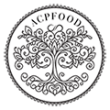
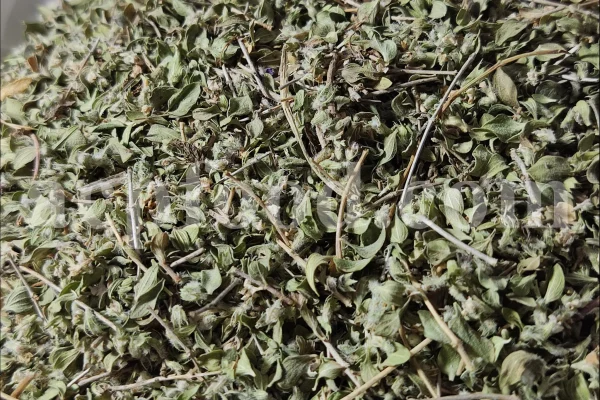
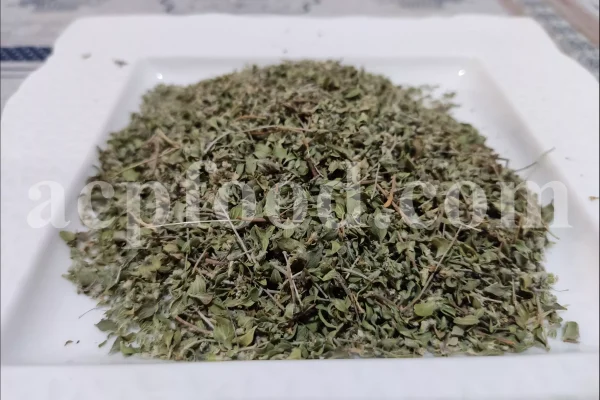





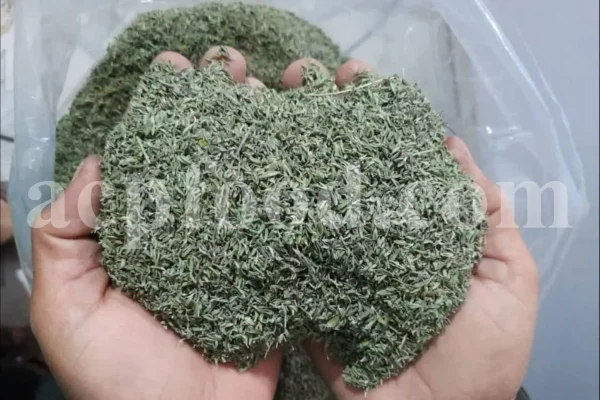
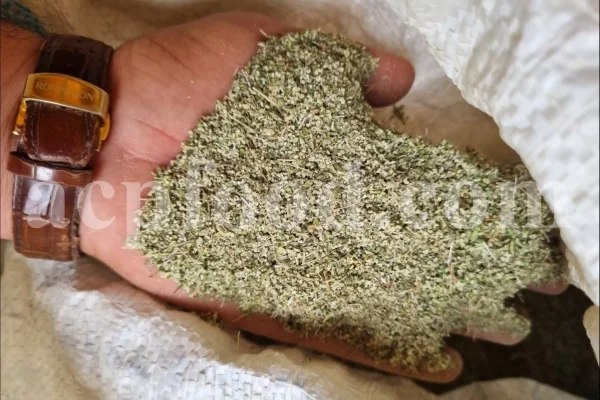
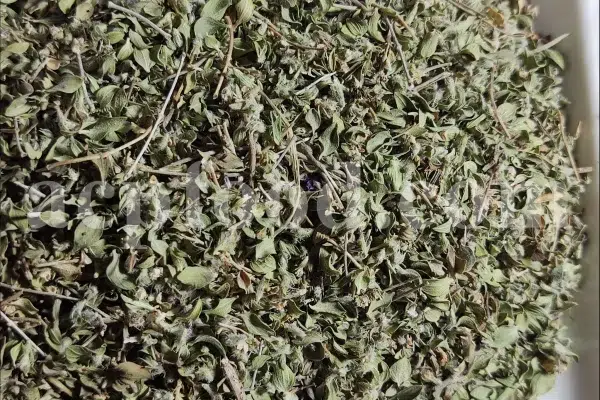
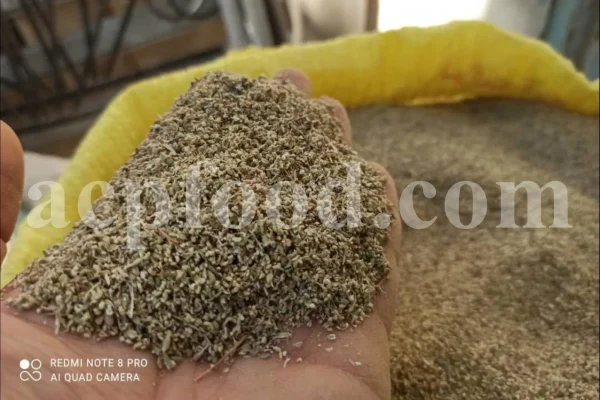



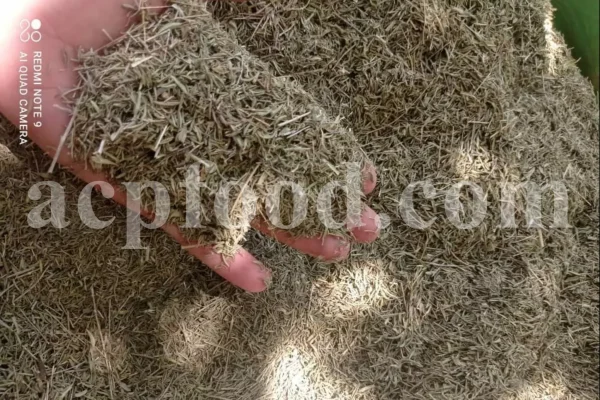


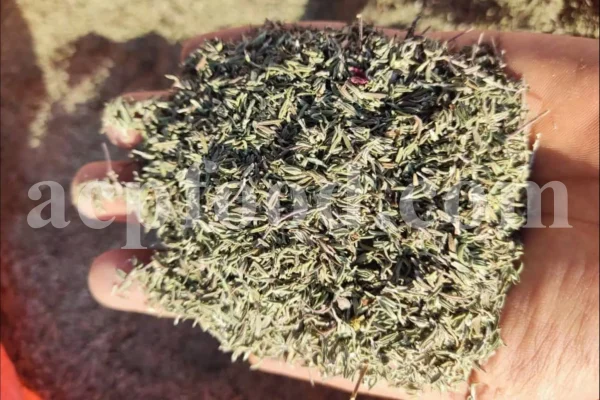




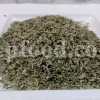




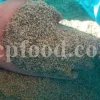


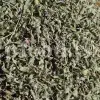
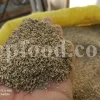






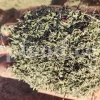





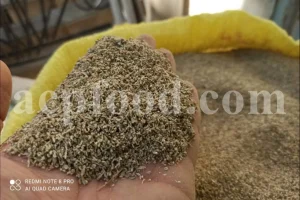

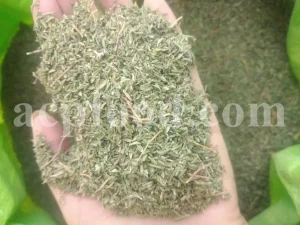




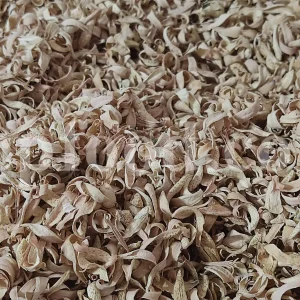
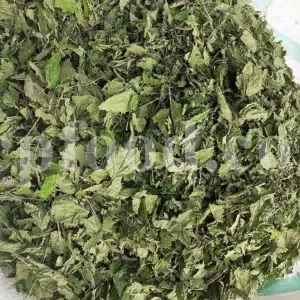
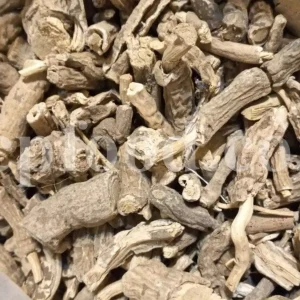
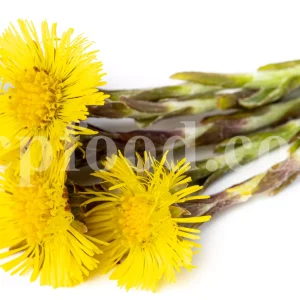
Reviews
There are no reviews yet.